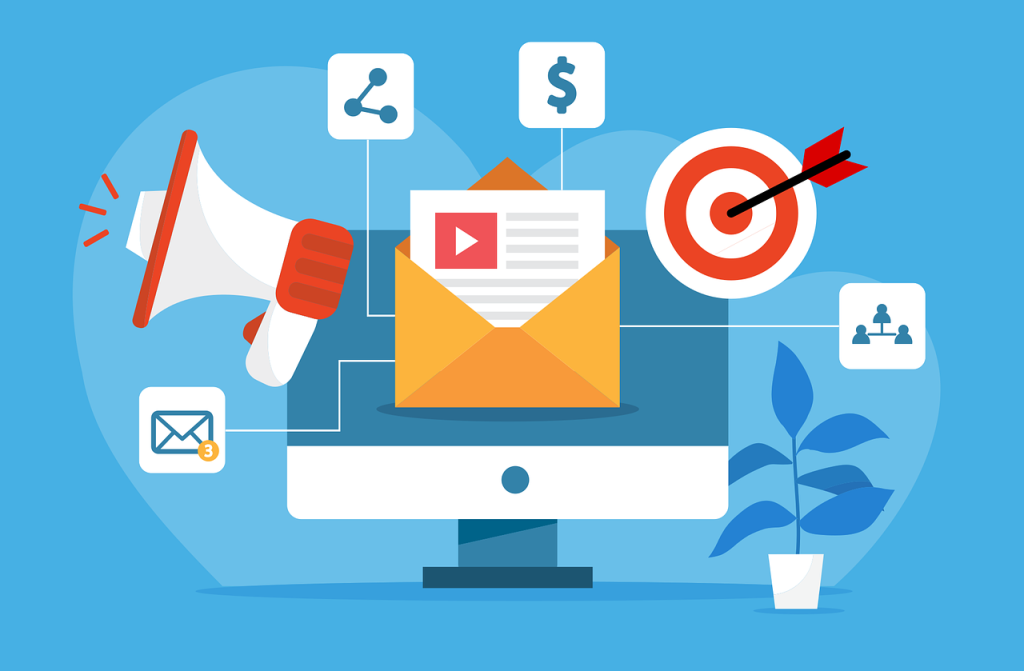If you’re in the moving business, you already know how competitive things can get. People shop around. They compare quotes. And often, they take their time before finally booking a move. That gap between the first website visit and the final decision? That’s where email marketing can do some serious heavy lifting.
Email isn’t just for coupons and confirmations—it’s one of the most cost-effective ways to stay in front of potential customers, build trust, and turn interest into action. In this post, we’ll break down how email marketing works for moving companies and why it should absolutely be part of your digital strategy.

Why Email Marketing Works for Movers
Moving is usually a one-time or once-in-a-while decision. That means you’re not always marketing to people who are ready to book immediately. Some folks are just starting to plan. Others are still deciding if they want to move at all. Email lets you stay in their inbox—and top of mind—so when they’re ready, they think of you first.
And unlike social media or ads, email isn’t at the mercy of an algorithm. If someone’s on your list, you can reach them directly. It’s personal, permission-based, and powerful.
What Kind of Emails Should You Send?
This is where things get fun. Email marketing isn’t just blasting people with “Book Now” messages. You want to provide value, show your expertise, and build a relationship. Here are some ideas:
- Welcome Emails: After someone fills out a quote form or downloads a checklist, send a friendly welcome message introducing your business and services.
- Moving Tips and Checklists: Share packing hacks, moving timelines, or reminders that help take the stress off their plate. (This is a form of content marketing)
- Behind-the-Scenes Stories: A quick note about a recent move or a shout-out to one of your crew members adds a human touch.
- Special Offers or Seasonal Promos: If you’re running a spring discount or off-season deal, email is the best way to share it with interested leads.
- Follow-Ups: Didn’t hear back after a quote? A quick follow-up email could nudge them to move forward.
- Review Requests: After a job is done, follow up with a thank-you email and a link to leave a review. (This pairs well with your online reviews strategy)
Building (and Growing) Your List
You can’t send emails if you don’t have anyone to send them to. That’s why growing your email list should be a priority. Here’s how to do it ethically and effectively:
- Add a signup form to your website—especially on your homepage and quote page.
- Offer a downloadable resource, like “The Ultimate Moving Checklist,” in exchange for an email.
- Ask for emails when people call in or book a move.
- Make sure your quote forms include an email opt-in checkbox.
Just remember: always get permission. You don’t want to end up in the spam folder.
How Often Should You Email?
There’s no magic number here, but once or twice a month is a good place to start. You want to stay visible without being annoying. If you’re promoting a sale or peak-season reminder, you can send a little more often.
The key is consistency. Set a schedule—like the first and third Wednesday of every month—and stick to it.
Simple Email Automation That Works
Even if you’re not tech-savvy, there are great tools out there (like Mailchimp, Constant Contact, or ActiveCampaign) that let you automate parts of your email marketing.
Here’s an easy automation to start with:
- Lead Signs Up: They request a quote or download a guide.
- Day 1 – Welcome Email: Thank them, introduce your company.
- Day 3 – Tip Email: “5 Things to Do 30 Days Before Moving”
- Day 7 – Social Proof Email: Share a customer review or success story.
- Day 10 – Offer Email: Send a discount or remind them to book.
That’s a week and a half of solid follow-up—and you don’t have to lift a finger once it’s set up.
Email and Your Other Marketing Channels
Your emails don’t exist in a vacuum. They support everything else you’re doing. If you’re driving traffic with SEO or PPC ads, make sure there’s a way for visitors to sign up while they’re on your site. Then use email to keep the conversation going.
Got a great blog post about landing pages that convert or conversion rate optimization? Feature it in an email. You’re repurposing valuable content and boosting visibility at the same time.
Metrics to Watch
Don’t worry—you don’t need to be a data expert. Just keep an eye on a few basic numbers:
- Open Rate: Are people opening your emails? (20–30% is a healthy range)
- Click Rate: Are they clicking on your links?
- Unsubscribe Rate: If this is high, you might be emailing too often—or your content isn’t resonating.
Over time, these numbers help you refine your approach and write better emails.
Final Thoughts
If you’re a moving company looking to stand out, email marketing might just be your secret weapon. It builds trust. It keeps you top-of-mind. And it helps turn leads into customers—without spending a ton on ads.
Start small. Be consistent. Offer value. And most importantly, treat your email list like a relationship, not a transaction.
Want help setting up your first email sequence? Let’s chat. This is what we do.

Leave a Reply